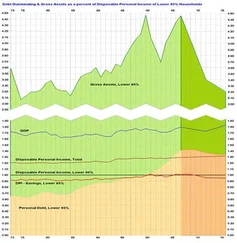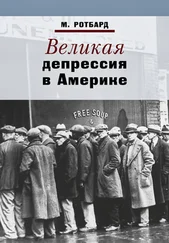Подробные сведения о жизни Кейнса содержатся в его трехтомной биографии, написанной Робертом Скидельски: Robert Skidelsky: John Maynard Keynes, vol. 1, Hopes Betrayed, 1883–1920 (London: Macmillan, 1983); vol. 2, The Economist as Savior, 1920–1937 (London: Macmillan, 1992); vol. 3, Fighting for Freedom, 1937–1946 (London: Macmillan, 2000). См. также: R. F. Harrod, The Life of John Maynard Keynes (London: Macmillan, 1951); Peter Clarke, The Keynesian Revolution in the Making, 1924–1936 (Oxford: Clarendon Press, 1988). [См.: Скидельски Р. Джон Мейнард Кейнс. 1883–1946. Экономист, философ, государственный деятель: в 2 кн. М.: Московская школа политических исследований, 2005.]
John Maynard Keynes, The End of Laissez-Faire (London: Hogarth, 1927), p. 5. Лекция впервые прочитана в Оксфорде в 1924 г. как Мемориальная лекция в честь Сиднея Болла, а затем, в 1926 г., в Берлинском университете. [См.: Кейнс Дж. М. Конец laissez faire // Кейнс Дж. М. Общая теория занятости, процента и денег. Избранное. М.: Эксмо, 2007. С. 367.]
Ibid., pp. 17; 20. [см.: Там же. С. 373, 372.]
Ibid., р. 32.
Ibid., p. 33. [Там же. С. 377.]
John Elliott Cairnes, Essays in Political Economy: Theoretical and Applied (London: Macmillan, 1873), р. 244.
Keynes, End of Laissez-Faire, рр. 32–33. [См.: Кейнс Дж. М. Конец laissez faire . С. 377.]
Ibid., pp. 34–35. [Там же. С. 378.]
Ibid., p. 36. [Там же. С. 378.]
Ibid., p. 44. [Там же. С. 381.]
Ibid., p. 38. [Там же. С. 379.]
Skidelsky, John Maynard Keynes, vol. 2, Economist as Saviour, рр. 225–229.
Keynes, End of Laissez-Faire, рр. 52–53. [См.: Кейнс Дж. М. Конец laissez faire . С. 384.]
Ibid., рр. 46–47. [Там же. С. 382.]
Ibid., p. 50. [См.: Там же. С. 383.]
«Review: The End of Laissez Faire » , Journal of Political Economy 36, no. 1 (1928), рр. 179–180; Sidney Webb, «The End of Laissez-Faire», Economic Journal 36, no. 143 (1926), рр. 434–441.
Eric Hobsbawm, The Age of Extremes: A History of the World, 1914–1991 (London: Michael Joseph and Pelham, 1994; reprint, New York: Vintage, 1996), pp. 94–95.
Michael Bernstein, A Perilous Progress: Economists and Public Purpose in Twentieth-Century America (Princeton: Princeton University Press, 2001), р. 64. мы верим» (см.: Richard Cockett, Thinking the Unthinkable: Think-Tanks and the Economic Counter-revolution, 1931–1983 (London: Harper Collins, 1994), р. 174).
Фрэнк Найт – Чарльзу Типпетсу, 7 июля 1933 г., box 62, folder 10, Frank H. Knight Papers, Regenstein Library, University of Chicago (далее Knight Papers); Фрэнк Найт – Чарльзу Типпетсу, 9 декабря 1933 г., box 62, folder 9, Knight Papers.
Выступая на Конференции политических действий консерваторов в 1981 г., Рональд Рейган заявил: «В значительной мере наше мировоззрение сформировали такие интеллектуальные лидеры, как Рассел Кирк, Фридрих Хайек, Генри Хэзлит, Милтон Фридмен, Джеймс Бёрнем, Людвиг фон Мизес» (Ronald Reagan, «Remarks at the Conservative Political Action Conference», – Speaking My Mind (New York: Simon and Schuster, 1989), р. 96). Когда в 1975 г. Маргарет Тэтчер посетила исследовательский центр Консервативной партии, она прервала обсуждение достоинств «третьего пути», положила на стол книгу Хайека «Конституция свободы» и сказала: «Вот во что
Alan Brinkley, «The Problem of American Conservatism», American Historical Review 99, no. 2 (1994), р. 409; Michael Kazin, «The Grass-Roots Right: New Histories of U.S. Conservatism in the Twentieth Century», American Historical Review 97, no. 1 (1992), р. 136.
Thomas Frank, What’s the Matter with Kansas? How Conservatives Won the Heart of America (New York: Henry Holt, 2004). О популистских акцентах консервативной риторики см.: Jonathan Rieder, «The Rise of the “Silent Majority”», in The Rise and Fall of the New Deal Order, ed. Steve Fraser and Gary Gerstle (Prince ton: Prince ton University Press, 1989), 243–268; Rick Perlstein, Before the Storm: Barry Goldwater and the Unmaking of the American Consensus (New York: Hill and Wang, 2001); Dan T. Carter, The Politics of Rage: George Wallace, the Origins of the New Conservatism, and the Transformationof American Politics (New York: Simon and Schuster, 1995).
Lisa McGirr, Suburban Warriors: The Origins of the New American Right (Princeton: Princeton University Press, 2001), р. 163; Jerome L. Himmelstein, To the Right: The Transformation of American Conservatism (Berkeley: University of California Press, 1990), р. 45. Другие описания современного консерватизма как совокупности родственных, но не сведенных в систему взглядов см. в: Jonathan Schoenwald, A Time for Choosing: The Rise of Modern American Conservatism (Oxford: Oxford University Press, 2001), р. 8; Sara Diamond, Roads to Dominion: Right-Wing Movements and Political Power in the United States (New York: Guilford, 1995), рр. 6–7.
О тревоге по поводу статуса см. Richard Hofstadter, «The Pseudo-conservative Revolt», in The New American Right, ed. Daniel Bell (New York: Criterion, 1955), р. 42. Майкл Роуджин критикует мнение Хофстадтера, настаивавшего на иррациональной природе массовых политических движений: Michael Rogin, The Intellectuals and McCarthy: The Radical Specter (Cambridge, Mass.: M.I.T. Press, 1967). О расовой политике консервативного движения см.: Joseph Crespino, In Search of Another Country: Mississippi and the Conservative Counterrevolution (Prince ton: Prince ton University Press, 2007); Thomas Byrne Edsall and Mary D. Edsall, Chain Reaction: The Impact of Race, Rights, and Taxes on American Politics (New York: W. W. Norton, 1992); Thomas Byrne Edsall, «The Changing Shape of Power: A Realignment in Public Policy», in Fraser and Gerstle, Rise and Fall of the New Deal Order , 269–293; Matthew Lassiter, The Silent Majority: Suburban Politics in the Sunbelt South (Prince ton: Princeton University Press, 2006).
Читать дальше










